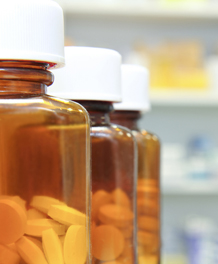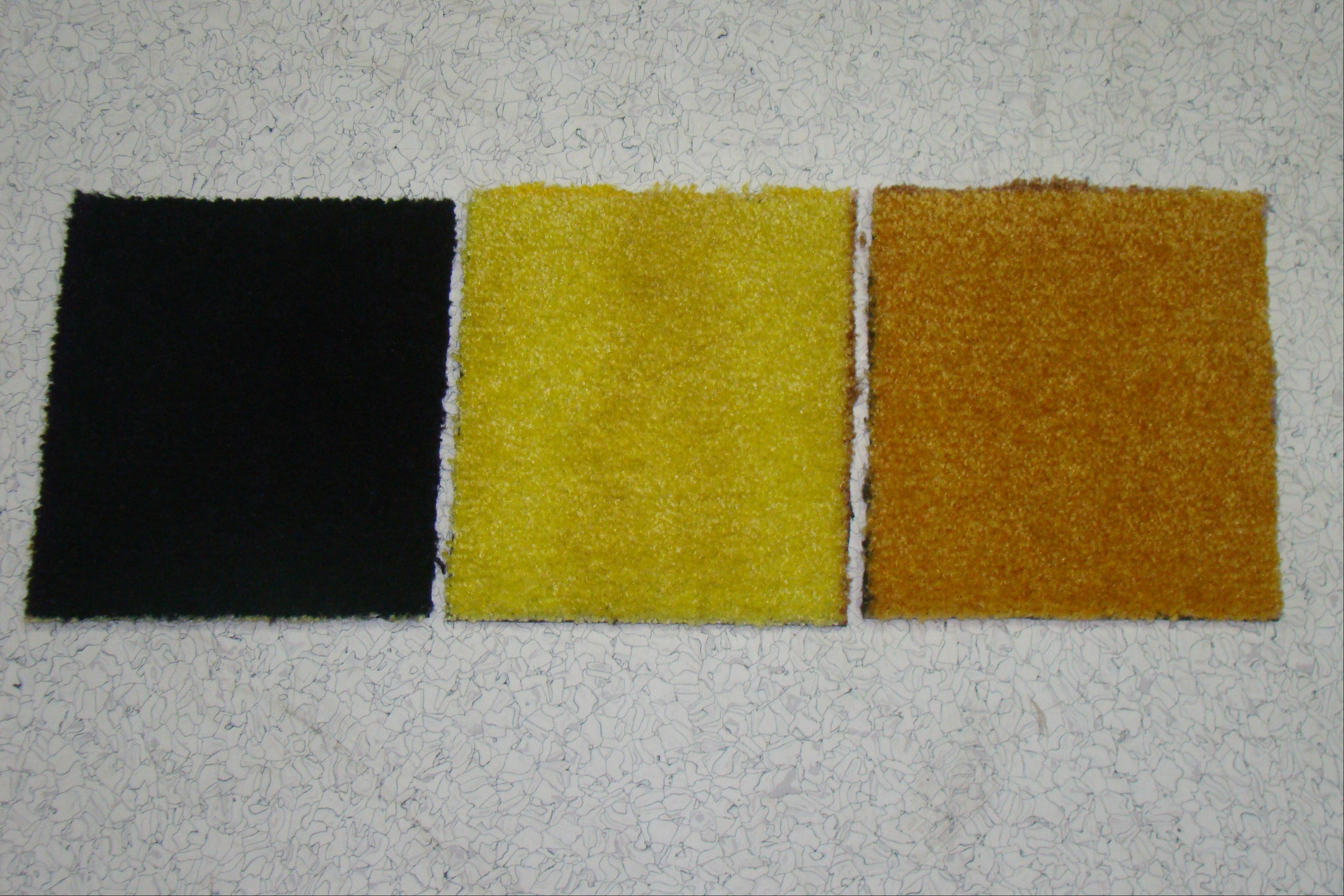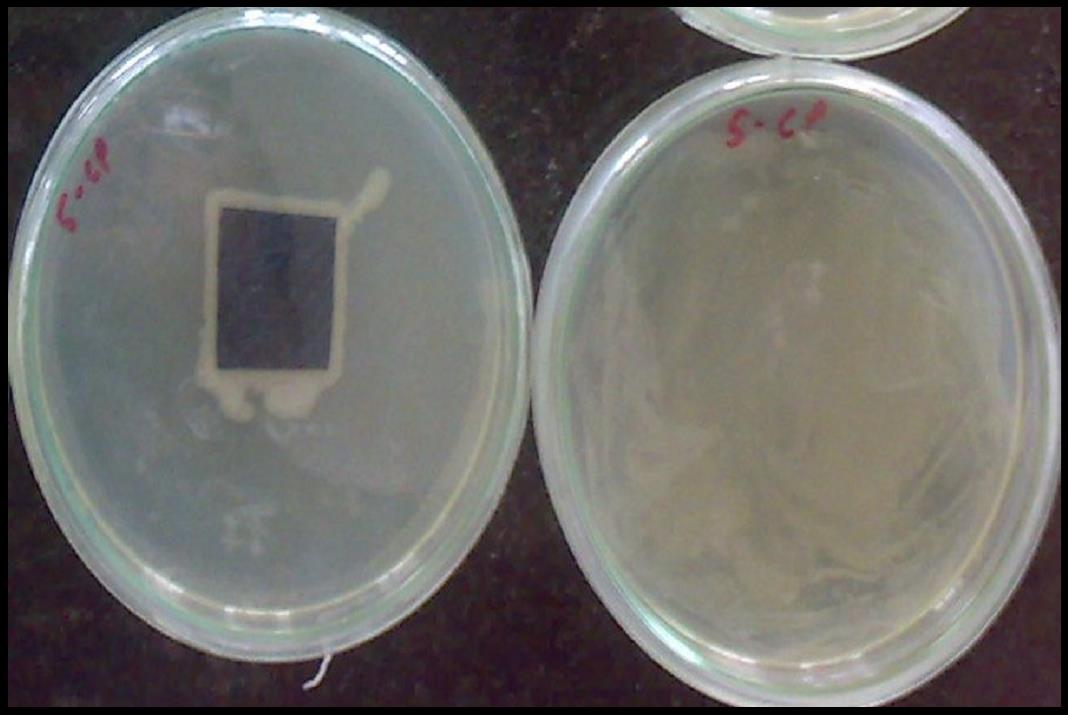Medical
Anti-microbial, Easy to clean Coatings on Glass, Metals, Plastics and Fibres
Overview
Contamination of walls, floors and surfaces of many articles that we use in day-to-day life is the main reason for disease to spread rapidly. Hence, ensuring that these surfaces are free of microbial contamination, especially in hospitals, is an important factor in maintaining the general health of people. Silver in the form of metallic silver or silver salts is known to be toxic to micro-organism, particularly bacteria while being relatively harmless to a man. When nano scaled silver is introduced to a hybrid sol-gel matrix, it results in an antimicrobial coating due to the silver nanoparticles and scratch resistant due to the inorganic network of sol-gel coatings providing high degree of abrasion resistance too. This helps in retarding the growth of microbes and thus minimizes the use of autoclaving process or cleaning using harsh chemicals. Other functionalities such as easy-to-clean property can also be incorporated into the coatings.
Key Features
- Incorporation of anti-microbial nanoparticles, controlled release mechanism
- Easy-to-clean coatings have surface properties comparable to perfluorinated polymers (hydrophobic surface)
- Non-toxic
- Easy to scale up for large area coatings
Potential Applications
- Medicine bottles/containers
- Hospital wall panels, hospital furniture
- Hearing aids
- Food packaging
- Textile walls and textile roofs, sun shades, blinds
- As top coats on wall paints
- Anti-fouling coatings on marine floating objects
Intellectual Property Development Indices (IPDI) 
- Performance and stability validated at laboratory scale
| Status | 1 | 2 | 3 | 4 | 5 | 6 | 7 | 8 | 9 | 10 |
Major Patents / Publications
Major Patents
- R. Subasri, H. Hima, Investigations on the use of nanoclay for generation of superhydrophobic coatings, Surface & Coatings Technology, 264 (2015) 121– 126.
- K. Jeevajothi, R. Subasri, K.R.C. Soma Raju (2013): Transparent, Non-fluorinated, Hydrophobic Silica Coatings with Improved Mechanical Properties, Ceramics International, 39, 2111-2116.
- R. Dineshram, R. Subasri, K.R.C. Somaraju, K. Jayaraj, L. Vedaprakash, Krupa Ratnam, S.V. Joshi, R. Venkatesan, Biofouling studies on nanoparticle-based metal oxide coatings on glass coupons exposed to marine environment, Colloids and Surfaces B: Biointerfaces 74 (2009) 75–83
Functionally graded dental implants by SPS
Overview
Titanium and its alloys are the most commonly used materials for dental implants. Although the biological performance of these alloys are extremely good, there are potential immunologic and aesthetic issues with titanium implants. The material currently explored to replace titanium alloys is yttria-stabilized zirconia (YSZ) due to its tooth-like colour, hardness, toughness, corrosion resistance and osseointegration. However, the lack of long-term stability of YSZ in presence of body fluid is a major disadvantage. To achieve the benefits of each of these materials and nullify their drawbacks, functionally graded materials (FGM) of Ti-alloy/zirconia, was developed using the spark plasma sintering (SPS) process. Their physical and mechanical properties, microstructure analysis and in-vitro biocompatibility tests were carried out and compared with existing commercial implants. The Ti-alloy/zirconia bi-layered component yielded excellent mechanical properties like strength, hardness and in-vitro biological properties like cytotoxicity, hemolysis and cell proliferation at par with those of commercially available dental implants.
Key Features
- A simple PM process to fabricate metal-ceramic FGMs in one step was explored for the first time
- High density, good hardness, strength and excellent biological properties were achieved in the Ti-alloy/zirconia components.
- The concept of developing new dental implant from existing MRI compatible materials could be demonstrated
Potential Applications
- Dental implants
Technology Readiness Level (TRL) :
- Processing and properties are validated at laboratory scale
- Coupon level demonstrated
Intellectual Property Development Indices (IPDI) 
- Basic concepts and understanding of underlying scientific principles
- Short listing possible applications
- Research to prove technical feasibility for targeted application
| Status | 1 | 2 | 3 | 4 | 5 | 6 | 7 | 8 | 9 | 10 |
Major Patents / Publications
Major Patents
- 1. R. Jayasree , K. Raghava, M. Sadhasivam, P.V.V. Srinivas, R. Vijay, K.G. Pradeep, T.N. Rao, D. Chakravarty, “Bilayered metal-ceramic components for dental implants by spark plasma sintering,” Mater. Lett. 344, 134403, 2023.
- Bilayered dental implants and process for the preparation thereof, patent application no. 202341014475 dated 03-03-2023.
Major Publications
Self-disinfecting Nanoparticle Coated Face Masks for Combating COVID-19
Overview
Masks are playing a major role as personal protective equipment needed to fight against the COVID-19 pandemic. Ag-Cu/CuO nanoparticles have been coated on fabrics by two different processes including nano-suspension coatings using nanopowders synthesized by Flame spray pyrolysis (FSP) and electroless coating process. Prototype masks are prepared for demonstration as shown in figure 1(a). Very uniform coatings have been achieved on the fabric by both processes (Figure 1 (b)). The nanoparticles coated fabrics are tested for their antibacterial efficacy using ASTM E2315 (99.7% disinfection of bacteria in 30 seconds) as shown in Figure (c) and anti-viral (SARS CoV-2) efficacy. The nanoparticles coated fabrics are found to exhibit anti-bacterial properties even after 30 washes and anti-viral properties showed more than 75% efficacy compared to uncoated fabric.
Key Features
- Scalable process
- Antibacterial efficacy : 99.7 % in 30 sec
- Anti-viral (SARS CoV-2 efficacy : ) > 75% compared to uncoated fabric
- Cost effective
Potential Applications
- Self-disinfection mask
- Personal protective equipment (PPE)
- Hospital textiles
Technology Readiness Level (TRL)
- Scale-up to pilot scale
- Validated for antibacterial and antiviral efficacy
Intellectual Property Development Indices (IPDI) 
| Status | 1 | 2 | 3 | 4 | 5 | 6 | 7 | 8 | 9 | 10 |
Major Patents / Publications
Major Patents
Major Publications
Indian patent draft under preparationNano-Hydroxyapatite Powders for Biomedical Applications
Overview
Hydroxyapatite (HAP) is a biocompatible ceramic widely used in medicines for many diseases, drug delivery, coating on implants, etc., due to its chemical composition comparable to that of teeth and bone. Nano-HAP nanopowders are advantageous over the micron sized powders due to high surface area. ARCI has developed scalable technology for the production of Hydroxyapatite (HAP) and β-Tricalcium Phosphate nanopowders for biomedical, pharma/nutraceutical applications. The powder production is demonstrated up to kilogram level on pilot scale using Flame Spray Pyrolysis (FSP) unit
Key Features
- Scalable Process
- Average particle size of 23 nm
- High purity
- Medical grade
- HAP and Beta-TCP mixture could be prepared
Potential Applications
- Bone tissue engineering
- Bone void fillers, Orthopedic and dental implant coating
- Desensitizing agent in post teeth bleaching
- Remineralizing agent in toothpastes
- Early carious lesions treatment
- Drug and gene delivery
Technology Readiness Level (TRL):
- Processing and properties are validated at laboratory scale
- Coupon level demonstrated
- Scaled up technology available
Intellectual Property Development Indices (IPDI) 
- Basic concepts and understanding of underlying scientific principles
- Short listing possible applications
- Research to prove technical feasibility for targeted application
- Coupon level testing in stimulated conditions
| Status | 1 | 2 | 3 | 4 | 5 | 6 | 7 | 8 | 9 | 10 |
Major Patents / Publications
Major Patents
Major Publications
CuO-Ag Nanocomposite Powders for Antimicrobial Applications
Overview
Key Features
- Destroys ≥ 99.2% against SARS-CoV-2 (CCMB), Destroys ≥ 99.997% H1N1 (BUREAU VERITAS)
- Kills ≥ 99.9% gram positive and negative bacteria (NABL Accredited Laboratory)
- Bacterial Filtration Efficiency: ≥ 99.7%
- Particulate Filtration Efficiency at 0.3 µm: ≥ 99.3
- Breathability: 61.2 Pa/cm2
- Splash resistance and water repellent and Classified as class 1 in flammability test
- Safe and harmless to skin and body (in-vivo test by SITRA)
- Reusable > 20 washes and Leaching of particles: allowed limit
Potential Applications
- Self-disinfection mask
- Medical suits
- Medical textiles and sports textiles
- Wound healing
Technology Readiness Level (TRL):
- Processing and properties are validated at pilot scale
- Pilot level demonstrated
- Scaled up technology available
Intellectual Property Development Indices (IPDI) 
- Basic concepts and understanding of underlying scientific principles
- Short listing possible applications
- Research to prove technical feasibility for targeted application
- Coupon level testing instimulated conditions
- Check repeatability/ consistency at coupon level
- Prototype testing in real-life conditions
- Check repeatability/ consistency at prototype level
- Reassessing feasibility (IP, competition technology, commercial)
| Status | 1 | 2 | 3 | 4 | 5 | 6 | 7 | 8 | 9 | 10 |
Major Patents / Publications
Major Patents
- K. Hembram, P. Haripriya, N. Sneha , B. V. Sarada, H.H.Krishnan and T.N. Rao, Synthesis of ceramic-metal nanocomposites for developing self-disinfecting fabrics against SARS-CoV-2 (under review)
Major Publications
Development of Biodegradable Alloys and Processes for Implants
Overview
Key Features
- Temporary implant; Elimination of secondary surgery
- Avoid stress-shielding and thrombosis
- Excellent mechanical properties and degradation rate
- Non-cytotoxic to HOS cells
Potential Applications
- Implant Materials for Bone Surgery: Plates, Screws, Pins, etc.
- Stents: Vascular, Coronary, Ureteral, Prostatic, Pancreatic and Biliary, Colon etc.
- Tissue Engineering : Hard and Soft Tissue Anchors /Scaffold
Technology Readiness Level (TRL):
- Processing and properties are validated at laboratory scale
- Coupon level demonstrated
Intellectual Property Development Indices (IPDI) 
- Basic concepts and understanding of underlying scientific principles
- Short listing possible applications
- Research to prove technical feasibility for targeted application
- Coupon level testing in stimulated conditions
| Status | 1 | 2 | 3 | 4 | 5 | 6 | 7 | 8 | 9 | 10 |
Major Patents / Publications
Major Patents
- Improved Method of Preparation for Biodegradable Mg-Zn-Zr Alloys with Superior Degradation, Biocompatible and Mechanical Properties (A patent to be filed).
- D. Spandana, Hemin Desai, D. Chakravarthy, R.Vijay and K. Hembram, Fabrication of a Biodegradable Fe-Mn-Si Alloy by Field Assisted Sintering, Advanced Powder Technology, 31, 12, 4577-4584, 2020













